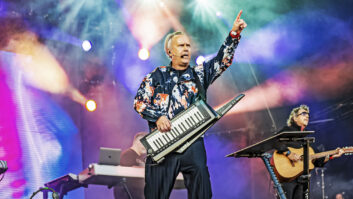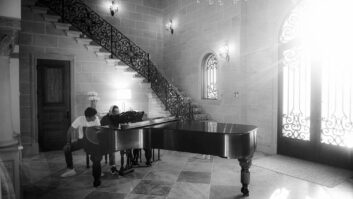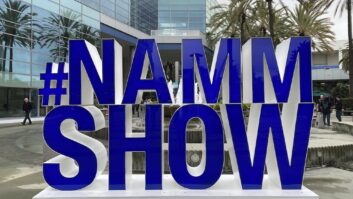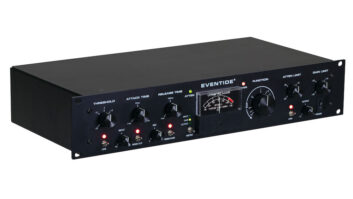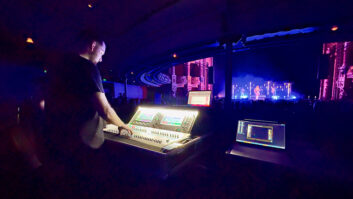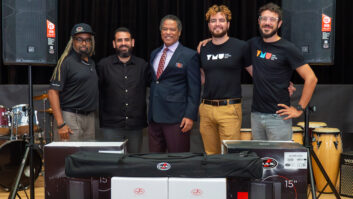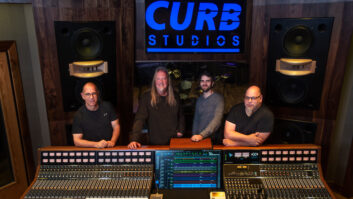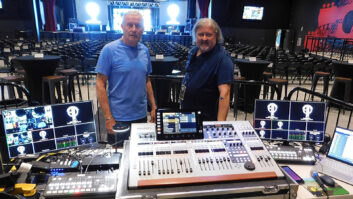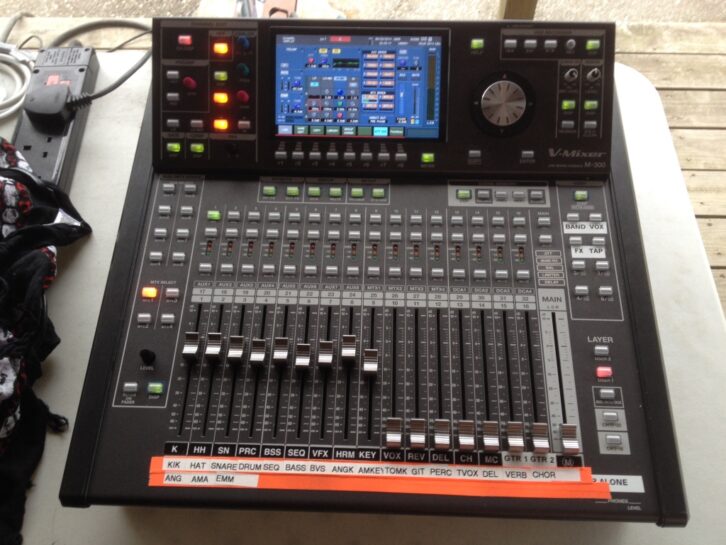
Brookhaven, NY (August 18, 2014)—This summer’s Retro Futura Tour was out to revive that ’80s vibe; aimed squarely at folks with a sweet-tooth for synthpop, the five-act package featured co-headliners Howard Jones and Tom Bailey of Thompson Twins— who hadn’t performed his former band’s music since 1987—along with opening sets from Katrina Leskanich of Katrina and the Waves, China Crisis and Midge Ure of Ultravox.
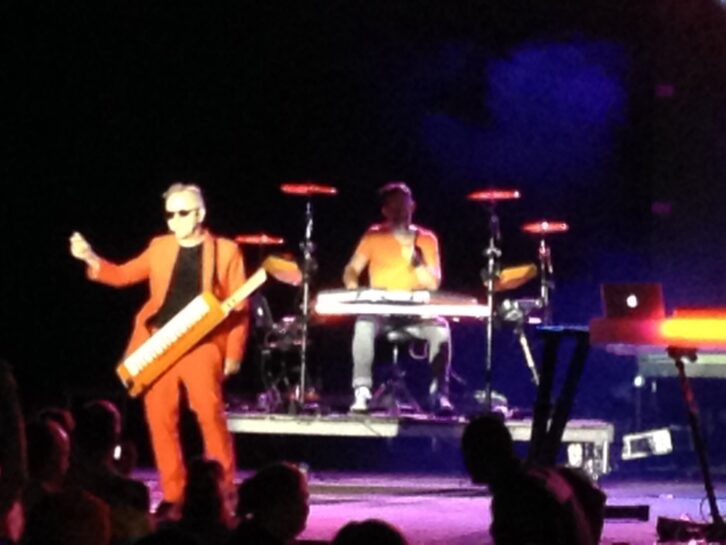
A tightly run ship, the tour picked up local production at each stop, with the openers’ sets mixed by regional engineers. The coheadliners, however, were mixed on identical—and unusual—FOH/ monitor systems carried by the production and overseen by Sean Vincent, who’s been Howard Jones’ live engineer for the last six years.
“Until three years ago, we were very traditional,” said Vincent. “I would mix FOH on whatever board was given to me, and we’d have a monitor engineer who would use whatever the venue had. Howard’s set is very precise, however, and the problem we had all the time was that we couldn’t get the band consistently happy with what they needed to hear in their in-ears.”
The unlikely answer, it turned out, was to center Jones’ production around Roland’s V-Mixing System, an integrated series of digital consoles, personal mixers and recording gear that connect through specialized REAC Cat 5 digital snakes. The catch is that it’s intended for installations—Roland’s own website highlights its use for houses of worship, schools and boardrooms, but touring? Not a word.
“I’ve not bumped into anyone else using it live,” Vincent admitted, “but they should because it’s flexible and very robust. That system’s been here four or five times, we’ve been to Japan with it, Australia, all over Europe; never goes wrong, luckily.”
Aiming for a system that could handle front-of-house and monitors— and yet travel on commercial flights if necessary—Vincent centered FOH around a diminutive 32-channel Roland V-System M-300 console, which easily fit Jones and his backing musicians. Even with each of the musicians running separate Macs that variously used Apple Logic Pro X MainStage 3, Ableton Live and more, they only added up to 24 inputs coming off the stage. As a bonus, “I’ve only got one live mic, which is Howard’s Sennheiser ME 3 headset; everything else is line-level DI inputs,” said Vincent. “Since they’re all on in-ears with no wedges or sidefills, it’s a very quiet stage, which means I can do a much cleaner house mix. I don’t carry anything apart from that little desk; we use all the on-board effects—the reverbs are good, delays are good. It’s got all the vintage Roland Dimension D stuff in there, and the EQ is lovely, really nice.”
The musicians onstage, meanwhile, mixed themselves via Roland M48 personal mixers connected to the same stage boxes as the M-300. Using a single Cat 5 digital snake for power and audio, the M48 retains the musicians’ last mix, so with the exception of tweaking, once a mix was dialed in at the start of the tour, it generally was ignored. All the performers were outfitted with ASC custom T1 Live in-ear monitors and live packs, designed with built-in ambient mics that allow users to dial in their desired amount of ambient stage volume.
It was Jones who convinced Bailey to come out on the road performing Thompson Twins tracks, and since Vincent mixed both acts, it was only fitting that he created a near clone of Jones’ Roland rig for Bailey’s band. “Tom’s set is slightly more complicated; I’ve got 32 inputs on that. Tom’s wearing exactly the same headset mic Howard uses, and then the drummer and two keyboard players have Shure 58s.”
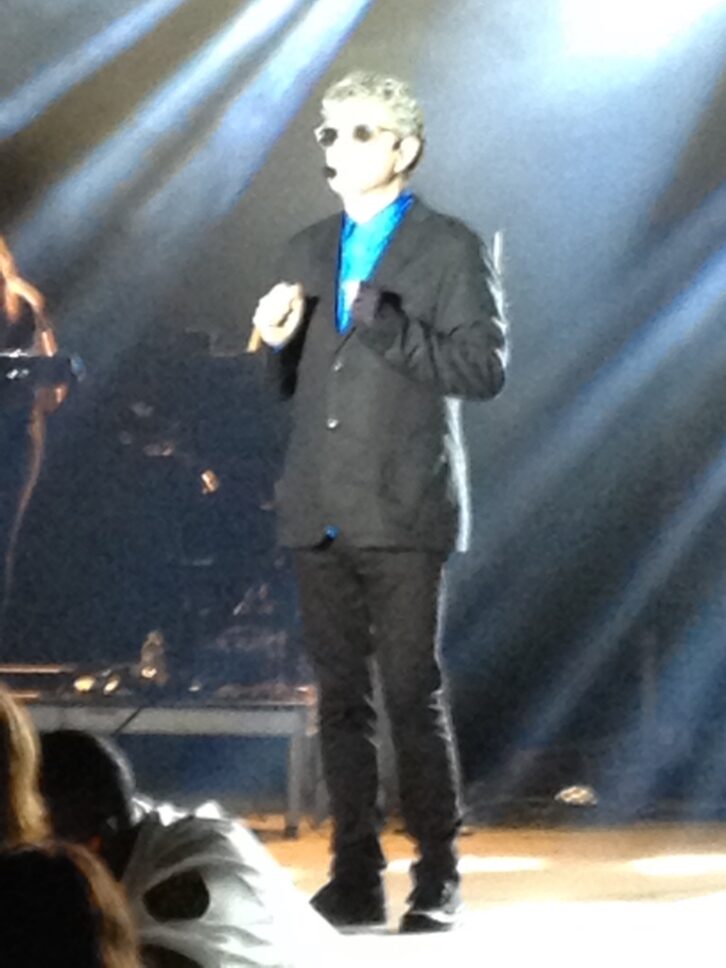
While the Roland system was easily adapted to Bailey’s band, Vincent noted it’s not for everyone: “It requires the artists to have at least a small amount of engineering ability to do their own mixes.” Three years and countless shows later, he said there’s only one remaining drawback. “I’ve had some snide looks from other engineers, because it’s tiny,” he laughed. “It doesn’t look like you should be able to do this kind of thing with it, but you totally can.”
The system sounded fine coming through the sizable L-Acoustics V-Dosc rig provided by regional audio company Eastern Stage Productions (Edgewood, NY) at the journey’s third stop—an evening at the Pennysaver Amphitheatre on Long Island. If Retro Futura provided a fun trip back in time for the audience, it turned out that the tour did the same for Vincent as well, as he worked alongside the man who first inspired him to get into sound.
“Bizarrely, it’s kind of Midge Ure’s fault,” he grinned. “Years ago when I was at school, there was a TV program in the UK called Tomorrow’s World. It’s not on anymore, but it was all about stuff that’s going to come in the future and it was really exciting. Well, Midge did a special edition where it was all about the latest recording technology, and he was showing off the first digital mixer that was affordable—the Yamaha DPM7, I think it was. I was probably about 14, saw all that cool stuff he was using and thought, ‘Ah, I quite fancy doing that!’”
Roland
rolandsystemsgroup.com
ACS Custom
acscustom.com
Sennheiser
sennheiserusa.com
